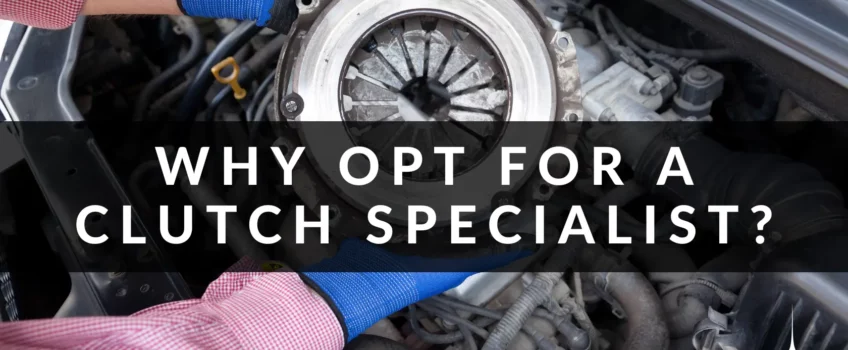
Maintaining Your Clutch: Tips from a UK Clutch Specialist
The clutch is more than just a part of your car; it’s the unsung hero that seamlessly connects your vehicle’s engine to its gearbox. As an expert clutch specialist, we know how essential this connection is for transmitting power and enabling smooth gear changes. When you press the clutch pedal, it disengages your engine from the gearbox, a critical action for changing gears without causing damage. This seemingly simple mechanism is the cornerstone of your car’s functionality, allowing for controlled acceleration and efficient power management.
Anatomy of a Clutch: Components Explained by a Clutch Specialist
To understand the importance of proper clutch maintenance, it’s essential to know its key components. The three main parts of a manual transmission clutch system are the clutch disc, pressure plate, and flywheel. As a dedicated UK clutch specialist, we see these components every day and can identify any issues that may arise. Here is a short breakdown of each:
- Flywheel: This is bolted to your engine and acts as a mating surface for the clutch disc.
- Pressure Plate: Attached to the flywheel, it uses a spring mechanism to apply or release pressure on the clutch disc.
- Clutch Disc: Residing between the flywheel and pressure plate, it’s the main component that connects the engine’s power to the gearbox.
- Throw-Out Bearing: Activated when you press the clutch pedal, it helps to release or engage the clutch smoothly.
Recommended: What’s The Difference Between a Hydraulic Clutch and a Mechanical Clutch?
How Can I Make My Clutch Last Longer?
The lifespan of a clutch can vary widely, depending on your driving habits and vehicle maintenance. Regular checks by a skilled clutch specialist can help diagnose early signs of wear and prolong the life of your clutch. Here are some tips for maintaining a healthy clutch system:
- Avoid Riding the Clutch: Resting your foot on the clutch pedal while driving can cause premature wear on your clutch disc.
- Drive Smoothly: Abrupt acceleration and deceleration, or shifting gears too quickly, can put strain on your clutch system.
- Use Neutral at Stops: In heavy traffic, putting your car in neutral at stops instead of pressing the clutch pedal can give it a break and reduce wear.
- Get Regular Inspections: A specialist clutch technician can identify any issues early on and advise on necessary repairs or replacements.
Clutch Repair: Why DIY is not Always the Best Option
With many online tutorials and videos available, it may seem tempting to try and fix your clutch issues yourself. However, as a seasoned UK clutch specialist, we highly recommend leaving it to the professionals as they will ensure that your vehicle receives the best possible care, using the right tools and techniques to diagnose and fix any clutch-related issues efficiently. Here’s why you should only work with a reputable clutch specialist:
- Specialised Knowledge: A specialised technician has extensive knowledge and experience in dealing with all types of clutches and can accurately diagnose any problems.
- Specialised Tools: Repairing or replacing a clutch requires specific tools that a DIY enthusiast may not have on hand.
- Safety Concerns: Working under your car can be dangerous, especially if you don’t have the proper equipment or know-how. Let a professional handle it for your safety and peace of mind.
Recognising Clutch Problems: Expert Advice
As a dedicated clutch specialist, we have seen and dealt with all sorts of clutch issues. Here are some common symptoms that indicate you may need a clutch replacement service:
- Unusual Pedal Feel: If the clutch pedal feels spongy, stiff, or unusually low, it could indicate a problem.
- Difficulty in Gear Shifting: A clear sign of clutch issues is when you experience grinding noises or resistance while shifting gears.
- Burning Smell and Slipping Clutch: These are tell-tale signs that your clutch may be wearing out and needs immediate attention.
The Elite Garages Difference: Choosing the Right Clutch Specialist
In conclusion, a worn clutch can significantly impact your car’s performance and safety. It is crucial to be vigilant for the symptoms outlined in this article and address them promptly. Remember, it is always better to prevent problems rather than deal with costly repairs later on. Regular vehicle maintenance, including clutch inspections, not only saves you money in the long term but also ensures your safety on the road.
When it comes to clutch replacement, it’s crucial to rely on an accredited and qualified clutch specialist service centre to avoid potentially high costs. At Elite Garages, our team of clutch experts is here to provide advice on necessary repairs or replacements. We also only use original manufacturer-recommended parts, and our experienced clutch fitters will guide you through the repair process and provide a no-obligation quote.
If you suspect that your clutch may be worn out, visit any of our service centres for a free clutch inspection. We provide a wide range of comprehensive services for all car makes and models, including MOTs, servicing, tyres, brake service, exhaust replacement, battery replacement, and wheel alignment among others. Explore our website for more details on these services.
FAQS:
Click the + to read any answer or visit our most FAQ page to review the most frequently asked questions across all our Elite Locations.
If you click on a ‘Category’ or ‘Tag’ link, the page will ‘refresh’ and reload the page showing the top of the page first, you’ll then just need to scroll down to the FAQ section to see the results for the Category or Tag you selected.
The time it takes to replace a clutch can vary based on the vehicle’s make and model, as well as the experience and capabilities of the clutch repair centre and technicians. On average, you can expect a clutch replacement to take anywhere from 2 to 6 hours. However, it’s always best to check with your local service centre for a more accurate estimate.
It depends on the extent of the wear. Minor wear can sometimes be adjusted, but if the clutch plate is excessively worn or damaged, it usually needs to be replaced. Regular inspections and timely interventions can prevent a worn clutch from reaching the point of no return.
Signs that you may need a clutch repair or clutch replacement may have gone bad include a slipping clutch (where the engine revs but the car doesn’t accelerate as it should), difficulty in shifting gears, a soft or spongy clutch pedal, and unusual noises when the clutch pedal is pressed. If you experience any of these symptoms, it’s advisable to consult a vehicle technician as soon as possible.
About Us
Opening Times
Saturday : 8:30–4:00
Sunday : closed
More Information
Contact UsCustomer Information Pack
Check MOT Due Date
Free MOT reminder
Careers


